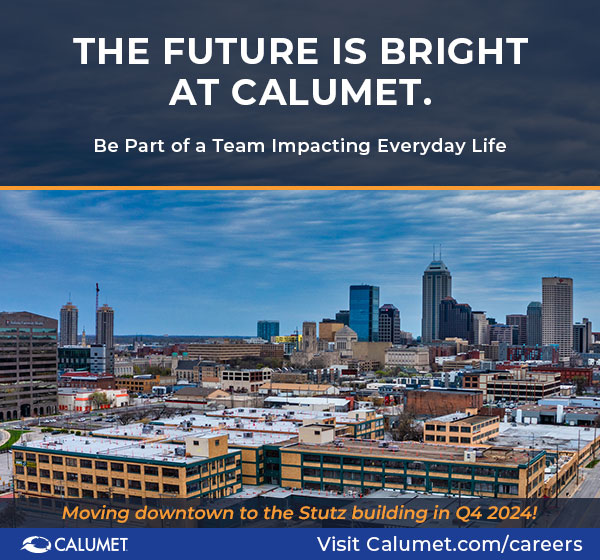Anchor architect Taft goes national, but keeps an eye on Indy

Local Initiatives Support Corporation (LISC) Executive Director Bill Taft has a unique talent for spying the unrealized potential of urban Indianapolis.
Decades before it could be called ‘up and coming,’ he moved his family to the Herron-Morton neighborhood. He spotted development potential amid the blighted properties of Fountain Square, setting to work on its transformation to one of the city’s hottest cultural districts. And he saw how the 2012 Super Bowl could be a catalyst for neighborhood revitalization long after the final play was run at Lucas Oil Stadium.
Now Taft has accepted a new challenge, assuming the newly-created national role of Senior Vice-President of Economic Development for LISC and bringing his entrepreneurial approach to community development to cities across the country. But he’ll stay engaged in Indianapolis, and the anchor strategy he’s helped build.
“It started with discussions among LISC, the Indy Chamber, INHP and Mayor Ballard’s office,” Taft recalls. “Anchor institutions in Chicago, Cleveland and Toledo – among others – were actively engaged in community and economic development efforts. We wondered if a similar approach could work here.”
An analysis involving seventeen Indy-based anchors confirmed their collective impact and uncovered opportunities for the urban neighborhoods that surrounded the institutional campuses across the city.
“We found that the anchors accounted for more square footage of facilities than the entire metro office market, and that they employed a workforce more than 50,000,” he said. “But roughly 23,000 of these employees were commuting from outside Marion County.”
The purchasing power of the anchor institutions also revealed widespread economic potential: “The anchors were spending nearly $2 billion a year on goods and services, but only a third of that was in Indianapolis,” Taft said.
If these institutions could be encouraged to spend one of every two dollars locally, the annual impact would approach $300M – for perspective, the economic equivalent of hosting the Super Bowl every year.
“Shared value”
Taft and the other partners outlined an anchor strategy based on these findings, around “live” (getting more anchor employees to live closer to work), “buy” (connecting anchors to local suppliers) and “hire” (training residents of the neighborhoods around the anchors to pursue job opportunities there) strategies.
In pitching the plan to anchor institutions, civic partners and potential funders, the message was simple: “Shared value, shared destiny.”
“By definition, ‘anchor’ institutions aren’t likely to relocate – their future is tied to the future of their neighborhoods,” Taft noted. “For the anchors, these initiatives strengthen the places they call home, create a more reliable and engaged workforce, and a healthier economic climate that benefits all of us.”
Neighborhoods start with neighbors
In most cities, LISC’s primary focus is affordable housing. Bill Taft will lead LISC’s national economic development portfolio based on his track record in Indianapolis, where he’s been free to broaden his work due to the presence of another powerful partner – the Indianapolis Neighborhood Housing Partnership (INHP). With INHP administering homebuying and rehabilitation incentives and LISC focusing on multi-family projects, the ‘Live’ phase of the anchor strategy has gained the most momentum.
“All of these initiatives work together, but it makes strategic sense to start with housing,” Taft said. “It’s easier to accomplish neighborhood goals with more neighbors – growing the populations of these areas is critical to their stability, safety, and ability to attract commercial development, like grocery stores.”
Boosting buying power
On the other hand, Taft sees the biggest challenge in enlisting anchors in ‘Buy’ initiatives.
“When it comes to procurement, these institutions have lots of priorities,” he said. “Encouraging them to elevate ‘buying local’ as a goal will take time, but will be well worth the effort.”
Taft cited a few examples of early success in this arena, including one institution buying furniture from a nearby manufacturer and promising relationships being forged with other local suppliers in building products and other areas. Along with the ‘Hire’ programs, Taft notes the employment impact of these connections.
“Under the ‘Hire’ umbrella, the training programs we’re developing with EmployIndy focus first on healthcare occupations, as the biggest common workforce need among our healthcare anchors,” he explained. “But because smaller local businesses tend to hire locally too, every new contract awarded to an Indianapolis company also supports jobs in our neighborhoods.”
#LoveIndy
As Taft widens his professional focus, he’ll continue to live, work, and be involved in Indianapolis, with high hopes for the Anchor Revitalization Program here.
“I’ll be able to bring insights from other cities back to Indianapolis, but I think we’re doing unique work here,” he said, noting that Indianapolis has a number of non-traditional anchor partners – like museums and Crown Hill Cemetery.
“We’re always looking for new drivers of economic activity for areas of our city that have been isolated from opportunity. And while anchors have been part of our thinking in many other programs, like Great Places 2020, this comprehensive strategy to maximize their impact has as much potential as any effort I’ve been part of in my career.”
Member Stories
Nebraska-Based E-Commerce Firm Picks Hendricks County for New Fulfillment Center

Join Our Newsletter
Quick Connect Links


